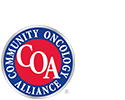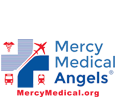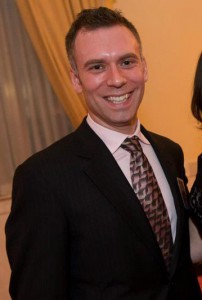MD and DO Medical Schools Consider Major Changes to Education Model
Experts from allopathic medical colleges (those that graduate MDs) and from osteopathic medical colleges (those that graduate DOs) have been actively exploring ways to lower the cost of medical and graduate school without sacrificing the quality of the education.
Groundbreaking recommendations were issued Monday that seek to improve osteopathic medical education in the U.S. and help fuel a new generation of primary care physicians who will be equipped to meet the demands of today’s changing health care landscape. One out of four students headed to medical school this fall are attending osteopathic medical school.
Released by the Blue Ribbon Commission (BRC) – a medical panel comprised of some of the nation’s leading experts in osteopathic medical education – the report (“A New Pathway in Medical Education”) coincides with publication of a related story in Health Affairs. BRC aims to find a solution to the primary care physician shortage by transforming the osteopathic medical education model, reducing inefficiencies and addressing high costs as well as rising student debt.
Osteopathic physicians, or DOs, emphasize “helping each person achieve a high level of wellness by focusing on health promotion and disease prevention” through hands-on diagnosis and treatment, according to the American Association of Colleges of Osteopathic Medicine (AACOM). Licensed to practice in all 50 states, DOs work in various environments across specialties.
MD education experts also recognize an urgency for changing medical education. Transforming the way students are trained to practice medicine is key to improving access to quality care for patients, according to an October 30th Perspective article (“Are We in a Medical Education Bubble Market?”) that appeared in the New England Journal of Medicine (NEJM). The article underscores why lowering the cost of health care and reducing the cost of medical education go hand in hand.
“If we want to keep health care costs down and still have access to well-qualified physicians, we need to keep the cost of creating those physicians down by changing the way that physicians are trained,” the authors are quoted as saying in a news release from Penn Medicine. “From college through licensure and credentialing, our annual physician-production costs are high, and they are made higher by the long time we devote to training.”
Cleveland Clinic, Ohio University Heritage College of Osteopathic Medicine Lead by Example
The Cleveland Clinic’s South Pointe Hospital is partnering with the Ohio University Heritage College of Osteopathic Medicine (OUHCOM) to implement the BRC findings through a new pathway that has five components:
- Focus on community needs served by primary care physicians.
Emphasize primary prevention and improvement of public health to raise the quality and efficiency of care. - Advance based on knowledge, not years of study.
Build a curriculum that centers on biomedical, behavioral and clinical science foundations so that the graduates’ readiness for practice can be better assessed through outcomes specific to medical education. - Boost clinical experience.
Offer clinical experience from the first year instead of doing so later on. Increase responsibility throughout the training, and streamline training between undergraduate and graduate school to avoid redundancies and inefficiencies. - Require a range of experiences.
These should include hospital, ambulance, and community health systems to provide the best learning experience. - Require modern health system literacy.
Focus on health care delivery science including principles of high quality, high value, and outcomes-based health care environments.
Dr. Robert S. Juhasz, DO, president of South Pointe Hospital, says that Cleveland Clinic and OUHCOM will work to develop a curriculum that emphasizes early clinical contact to ensure “we are providing the right care, in the right setting for the right person at the right time.”
The partnership, Dr. Juhasz says, “will transform primary care education,” and go far to help shift the focus of medical education “toward competency-based rather than time-based education. We want learners to be engaged, practice-ready primary care physicians and be equipped to care for the communities they serve.”
South Pointe, which has trained DOs for 40 years, is renovating its facilities to now accommodate OUHCOM. Starting in July, 2015 it will train 32 osteopathic medical student residents per class.
The implications of BRC’s recommended changes, according to Dr. Juhasz, “will enhance our primary care base for delivery of care in a patient-centered model, increasing access and quality and reducing costs,” while also cultivating a learning environment that will “encourage more students to enter DO and find hope and joy in serving patients so that they will want to work in the area they train.”
Lead author of the NEJM article — David A. Asch, MD, MBA, Professor of Medicine and Director of the Center for Health Care Innovation at Penn Medicine — says that medical colleges can play a critical role in helping to avoid a burst in the “medical education bubble.” One solution is for schools to lower the cost of tuition and reduce high debt-to-income ratios that could discourage medical students from pursuing careers in fields where more physicians are needed, including primary care.
“Doctors do well financially,” he says, “but the cost of becoming a doctor is rising faster than the benefits of being a doctor, and that is catching up to primary care more quickly than orthopedics, and that ratio is close to overtaking the veterinarians.”
Now tell us what you think. What ways do you think medical school could be overhauled? What incentives can be provided to attract more students to study medicine and become doctors, particularly in primary care, to help reduce the rising provider shortage?


















